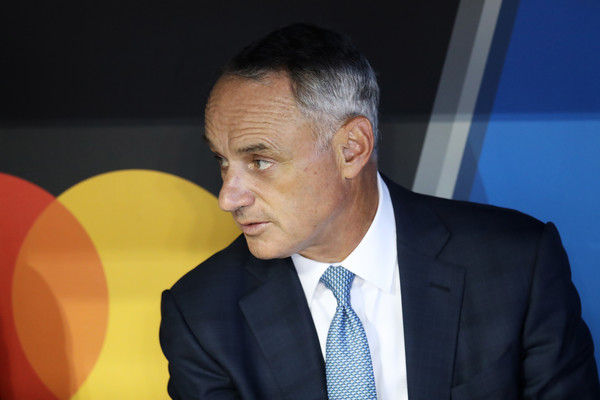The Mysterious Case of Tyler Saladino
- Jacob Bleiweis
- Apr 4, 2017
- 3 min read

AP Photo/Tony Dejak
I'm not sure if you have heard yet, but the Chicago White Sox are rebuilding. Completely. A fire sale that started with a man named Sale who is one of the best left-handed hurlers in the league. Chris Sale, nicknamed The Condor due to his unorthodox, eye-catching throwing mechanics, is a five-time All-Star and the White Sox all-time leader in strikeouts for a season. Now MLB.com’s number one prospect, Yoan Moncada; young, overpowering pitcher, Michael Kopech; and Luis Alexander Basabe, a young, promising outfielder, are in his place.
The White Sox then proceeded to trade outfielder Adam Eaton. A Gold Glove finalist, Eaton had excelled in right field after the switch from center, as well as at the plate as the Sox’s primary leadoff hitter. They traded him to Washington for Lucas Giolito, the number one pitching prospect in baseball; Reynaldo Lopéz, MLB.com’s 38th ranked prospect; and starting pitcher prospect, Dane Dunning.
Then, in a surprising move, the White Sox waived presumed starting second baseman Brett Lawrie in a move to save some money and open up the position to one of Chicago’s young, up-and-coming prospects. So of course, the White Sox starting second baseman and hitting leadoff on Opening Day— which unfortunately was postponed due to rain— was… Tyler Saladino?
Yes. Tyler Saladino. You may be asking yourself: who is Tyler Saladino? Well, here’s a little background information on the Chicago White Sox starting second baseman for the 2017 season.
After getting drafted by the Houston Astros in the 36th round of the 2009 June Ameture Draft, Saladino decided to attend Palomar College in San Marcos, California. He entered the draft again in 2010, and was drafted in the seventh round. Saladino spent almost six seasons as a relatively unheard of minor leaguer in the White Sox organization until he made his major league debut July 10, 2015 against the Sox’s crosstown rivals: the Chicago Cubs.
In Saladino’s first fourteen games, he hit .286 with 2 home runs and six RBIs and scored 10 runs while showing off tremendous fielding ability. The unknown, recently called-up Saladino looked like he could finally be the player the White Sox had been looking for at third base since Joe Crede left in 2008. Seriously. The Sox hadn’t had a good third baseman since Joe Crede. Their best third basemen were Brent Morel and Conor Gillaspie.
However, Saladino struggled the rest of the way that year, finishing with a slash line of .225/.267/.335. Although he continued to excel at third base, as well as some shortstop, Saladino was abysmal at the plate. According to Fangraphs, he had a wRC+ (weighting runs created plus, which measures total offensive value measured in runs adjusted for ballpark effects) of 62, which was well below the league average of 100.

AP Photo/Kamil Krzaczynski
Although Saladino struggled mightily after his hot start in 2015, the Sox continued to play him in 2016 as a utility infielder because of his unique ability to play second base, shortstop, and third base. After Brett Lawrie suffered a season-ending injury, Saladino captured the starting second base position.
Saladino improved his batting average by 57 points to .282, his OBP by 48 points to .315, and his slugging percentage by 74 points to .409. He also increased his batting average on balls in play (BABIP) by 60 points from .269 to .329 (Fangraphs). In the MLB, the typical BABIP is .300, so Saladino was significantly above average in that area.
When trying to figure out how Tyler Saladino could make such impressive strides at the plate, only one statistic stands out. According to Fangraphs, Saladino made hard contact on 18 percent of balls in play in 2015. In 2016, that number jumped to 25.3 percent. This fact could be the cause of Saladino’s incredible improvement from 2015 to 2016, but I can’t imagine it is the only factor.
It is unclear exactly how Tyler Saladino has transformed himself from an unheard of prospect in the Chicago White Sox organization to the Sox’s Opening Day starting second baseman and leadoff hitter. It is clear, however, that he is here to stay. Saladino went 2-4 in the Sox’s first game, walking as well and scoring a run.
Although he may lose his starting position when top prospect Yoan Moncada is called up— unless Todd Frazier is traded, opening a spot up for Saladino at third base— Saladino will always have a place on the White Sox roster because of his consistent bat, unique combination of power and speed, and his exceptional fielding at every infield position. And as the White Sox emergency catcher, Saladino can also play catcher if it comes down to it.




Comments